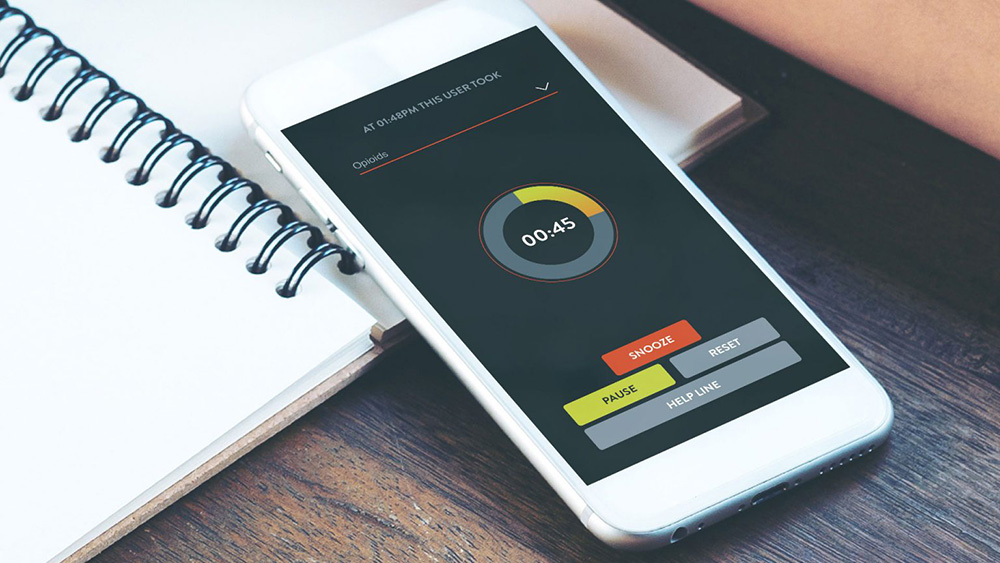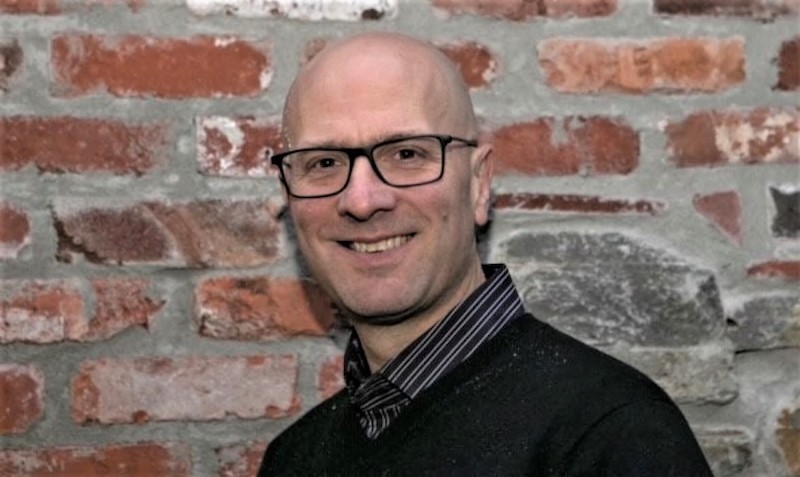Jeff Hardy was mid-way through a recovery program in 2017 when he learned his friend Evan had died of a fentanyl overdose.
Evan was alone when he died. There had been no one to call emergency services, who save the lives of about 99 per cent of people who overdose in B.C. — if they are called and can respond.
“Evan was one of the most giving people, most warm-hearted people I ever met,” said Hardy, who met the young man while they were in treatment together.
Within a day of losing his young friend, Hardy, now in recovery from alcohol addiction for nearly four years and CEO of Lifeguard Digital Health in Vancouver, began thinking about a solution to reach the most isolated people who use drugs and save their lives.
“Three years ago, I had a napkin and a crayon,” said Hardy. “That’s where it started.”
Hardy was inspired by an app “to protect you from yourself” in one of his favourite movies, The Internship. The imaginary app was designed to keep people from sending questionable texts when intoxicated.
Hardy began thinking about a similar idea for people who use drugs alone.
This month, with $900,000 in funding support from the province, the resulting overdose prevention app, the first of its kind, is rolling out across B.C. in the midst of a sharp spike in suspected overdose deaths.
Neil Lilley, a senior director at BC Emergency Health Services, said as the pandemic drives more people to be apart from others and use alone, “it was seen as a perfect time to get another tool in the toolbox.”
About 89 per cent of people who die of overdoses in B.C. used their fatal dose alone, Lilley said.
But advocates for people who use drugs want to see an expansion of other harm reduction tools beyond an app.
The app is already available to download for Apple and Android devices for use in the Vancouver Island and Interior Health regions, and will be live throughout B.C. later this month.
Stigma around substance use pushes many to use away from others and in secret, and physical distancing guidelines added additional pressure to use alone.
This is where the new “virtual buddy” comes in.
App users input the substance and dose they are taking and begin a 50-second timer when they take their dose.
When the timer runs out, they must either hit the “stop” button to indicate they are alright or snooze the alarm for another minute to wait a bit longer as the substance enters their body.
If they don’t say they are OK within 75 seconds of the timer going off, the app uses text-to-voice technology and the phone’s GPS data to call 911 and send emergency responders to the person’s aid.

The app will also continuously emit a loud alarm while emergency responders are on the way to tell others nearby there is someone in trouble.
“We went with a one-minute timer and added in a snooze function because when fentanyl is involved, it can send someone unconscious very rapidly,” said Lilley. “We know that seconds really do count, and that a minute too late is too late.”
Before its rollout began earlier this month, 18 months of beta testing were conducted in partnership with residents in single-room-occupancy hotels in Vancouver’s Downtown Eastside neighbourhood.
Partnerships with cell providers allowed wall-mounted tablets to be set up in each room with the app already installed, and devices to be distributed to people in need.
Beta users wanted a snooze function and assurances their information wouldn’t be shared with law enforcement.
Scott Jackson, CEO of software developer Essential Designs, said the information is only shared with B.C. emergency services and the interface is designed to be simple and quick so people don’t skip using it to save a minute or two.
“It needed to be simple enough for people to use in difficult situations,” he said.
Jackson and his team also worked to ensure the app did not disrupt the work of 911 dispatchers and paramedics. The text-to-voice features allow calls to feed into the regular 911 dispatch system and the app provides detailed information to first responders about what the person took and when.
Laura Shaver, treasurer for the Vancouver Area Network of Drug Users, says the app is a step in the right direction but safe supply and expanding the province’s network of overdose prevention sites should have been higher priorities.
“They’re distributing technology when they’re not even distributing the medication people need?” said Shaver, criticizing the slow rollout of safe supply measures as the price and availability of illicit drugs skyrocket in B.C.
“It’s an app. How many people actually are going to be able to have a phone or a computer to use this? So much of the demographic of users are cut off from it already,” she said.
Minister of Mental Health and Addictions Judy Darcy said the app is “another tool in the harm reduction toolbox” to combat the fatal effect of stigma that drives many to hide their substance use.
“It is people from all walks of life who are dying and dying alone,” said Darcy in an interview. “Our commitment is still to give it everything we possibly can and not to allow this to become the new normal.”
So far there are 273 users of the app and it’s been used 532 times.
There have been no dispatches to 911 yet, meaning “the uses represent either those testing it out or those actually using it and then hitting the stop button before it alerts through [the] 911 system,” said Provincial Health Services Authority spokesperson Lesley Pritchard in an email.
Last October, Lilley was part of a provincial contingent that presented the app at the White House to officials in the vice-president’s office. In February information was presented to a United Nations health body.
Lilley hopes that B.C.s initiative can help other jurisdictions adapt similar technology to save lives.
But acclaim is not what the app’s partners are using to measure success.
“The number one marker is if we can save one life,” said Jackson. “As long as it’s out there and being made available for someone who plans to use alone, that’s a sign of success.”
Hardy has also been heartened to see the impact the app can have on people who use it, particularly those who explore the resources on supports and treatment options available through the app.
Six per cent of people who tested the app in the beta phase have now sought treatment on their own, which Hardy says is an important part of Berezan’s legacy.
“Their chances of success skyrocket when it is their decision,” he said. “That’s an amazing thing to see, and I think Evan would be extremely proud that he could be a part of it.”
But Shaver said more measures are needed to prevent and respond to fatal overdoses.
“Let’s listen more to what the peers are suggesting and what the people doing drugs are telling you,” she said.
“Yes, please bring in the app, but don’t stop there.” ![]()
Read more: Health, Coronavirus, Science + Tech
















Tyee Commenting Guidelines
Comments that violate guidelines risk being deleted, and violations may result in a temporary or permanent user ban. Maintain the spirit of good conversation to stay in the discussion.
*Please note The Tyee is not a forum for spreading misinformation about COVID-19, denying its existence or minimizing its risk to public health.
Do:
Do not: